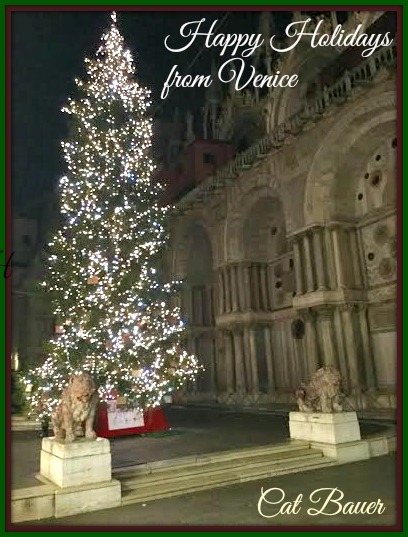 |
| Henriette and the Delphos gown - Photo: Elisa Gagliardi Mangilli |
(Venice, Italy) The 13th century Gothic palace, Palazzo Pesaro degli Orfei, which Mariano and Henriette
Fortuny transformed into their own fantastic stage set, is the perfect
backdrop for the stories of four women who dared to be different:
Henriette Fortuny, the inspirational wife of Mariano Fortuny;
Romaine Brooks, the bold American artist;
Sarah Moon, the groundbreaking French photographer;
Ida Barbarigo, the compelling Venetian artist.
.
 |
| Portrait of Henriette by Mariano Fortuny (1915) |
|
|
HENRIETTE FORTUNY - Portrait of a Muse
Adèle Henriette Nigrin, born in Fontainebleau in 1877, was Mariano Fortuny's wife, lover, muse, partner and co-creator. Fortuny was already a well-known artist when they met in Paris at the beginning of the 20th century. Mariano and Henriette spent 47 years together, living and working inside Palazzo Pesaro degli Orfei, their home and atelier, filled with those fabulous Fortuny lamps and chandeliers, fabrics, photography and paintings. Today, Palazzo Fortuny is one of the most intriguing palaces in Venice.
Henriette thought up the idea for the iconic Delphos silk gown, a must-have for fashionable women at the turn of the last century. In 1896, the 478 BC statue of a chariot driver was found at the Sanctuary of Apollo in Delphi, clad in a pleated robe. About 10 years later, that statue inspired the Fortunys to create the Delphos gown, which has become a work of art in its own right.
After the death of Mariano in 1949, Henriette dedicated her life to keeping the memory of the great artist alive. She donated Palazzo Fortuny to the city of Venice in 1956.
 |
| The Weeping Venus by Romain Brooks (1916-17) - Courtesy Museo Fortuny |
ROMAINE BROOKS - Paintings, drawing, photographs
Romaine Brooks was born Beatrice Romaine Goddard in Rome in 1874 to wealthy American parents, whose father deserted the family. After an early life in a foster home in New York City as a "child martyr," and near-starvation as a struggling artist in Paris, Rome and Capri, Romaine inherited a fortune in 1902 after her emotionally abusive mother and mentally ill brother died.
Romaine married the pianist John Ellington Brooks, a gay man who had fled England after the trial of Oscar Wilde. She became part of the non-conformist, cosmopolitan community that jumped from the Belle Epoque in Paris, to the island of Capri, and to Venice, challenging the established order.
Romaine had a simultaneous love affair with two heavy-duty women -- the dancer,
Ida Rubinstein and the writer, Natalie Clifford Barney -- as well as a
romantic affair with Gabriele D'Annunzio that evolved into a strong friendship.
Influenced by Whistler, Romaine was drawn to the color gray, and was the go-to portrait painter for celebrities and aristocrats.
 |
| A Tribute to Mariano Fortuny by Sara Moon - Courtesy Museo Fortuny |
SARAH MOON - A Tribute to Mariano Fortuny
Sarah Moon started life as Marielle Warin, born into to a Jewish family in occupied France in 1941. Initially a model in the swinging sixties under the name "Marielle Hadengue," Marielle Warin next changed her name to Sarah Moon and transformed into one of the major fashion photographers of all time -- in 1972 she was the first female photographer for the legendary Pirelli calendar.
In 1985, she morphed into a fine art photographer, concentrating on gallery and film work, winning awards like the Grand Prix National del Photographie in 1995, and the Prix Nadar in 2008.
Inspired by the soft light of the Venetian lagoon in the winter, and the swirls and patterns of Fortuny fabrics, Sara Moon's photos capture the mystical grandeur that permeates Palazzo Fortuny.
 |
| Erme e Saturni - Ida Barbarigo - Courtesy Museo Fortuny |
IDA BARBARIGO - Herms and Saturns
The Venetian artist, Ida Barbarigo, was born in Venice in 1920. Her husband was the artist,
Zoran Music; her mother was the painter and poet, Livia Tivoli; her
father was the painter, Guido Cadorin.
Erme e Saturni is the result of the last two decades of a lifetime of labor and love.
An herm is an ancient Greek sculpture for warding off evil, composed of a head, some kind of torso, and strategically-placed male genitals. Herms were often found at crossroads, inscribed with distances-- sort of like well-endowed signposts with magical powers that protected merchants and travelers.
Hermes was an Olympian god in Greek mythology, who morphed into the Roman god Mercury. Hermes was a phallic god who could move freely between the worlds of the mortals and the divine. The impish Hermes was the messenger of the gods, who liked to play practical jokes on god and man alike.
Saturn was an ancient Roman god, supposedly morphed from the Greek god, Cronus. Saturn and Cronus are both associated with time and the harvest, along with other more gruesome things, but one thing they both had in common is that during their "Golden Age" rule, humans enjoyed the beauty of the earth without labor. Imagine!
Saturnalia, the festival in honor of Saturn, was held from December 17 of the Julian calendar until December 23, which is about the end of December, beginning of January these days -- in other words, just about now. Saturnalia was a time to celebrate free speech, role reversals, gift-giving and lots of partying.
It was also the time of the Winter Solstice, which is on Tuesday, December 22, 2015 at 5:49 Rome time this year. Get your candles ready!
WINTER AT PALAZZO FORTUNY
December 19. 2015 to March 13, 2016
Click for more information.
Happy holidays from Venezia,
Cat
Venetian Cat - The Venice Blog

















